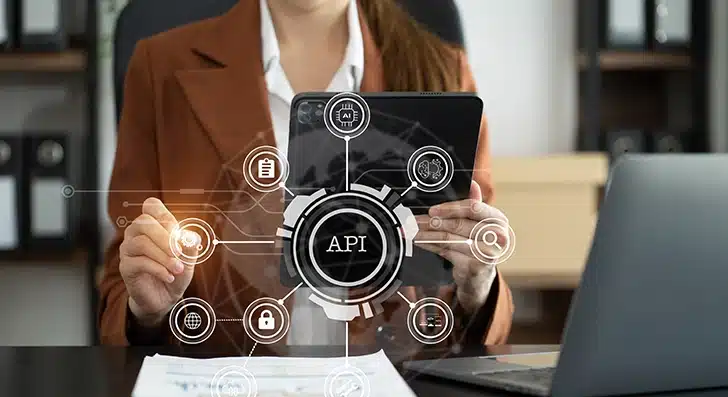Agility today has become a vital ingredient of business success in the digital era. Rapidly changing customer demands, mounting competition, and continuous technological advancements mean enterprises need to respond swiftly to a dynamic marketplace in order to stay relevant.
Against this backdrop, ensuring seamless technology operations and connectivity is a key imperative for every organization. Admittedly, building the perfect underlying IT platform to effortlessly meet every new business requirement, while providing stability, speed and flexibility can get very tricky. Especially, when the core systems have been ill-designed to handle the same.
Over the past two decades, many organizations have undertaken multiple rounds of technology upgrades and transformations, leaving them with layers and layers of IT complexity. Though they deliver their intended value, legacy applications and best-of-breed products place a significant burden on businesses when it comes to integrating modern applications. Besides struggling to handle the high data volumes characteristic of the new ecosystem, legacy systems are also not robust enough to keep pace with the high volume of real-time transactions.
Table of Contents
The Complexity of Traditional Legacy System Integration Approach
API Integration – A Strategic Modernization Approach
Technical Strengths of API Legacy System Integration
How to Resolve the Challenges in API Integration with Legacy Systems
The Complexity of Traditional Legacy System Integration Approach
Traditional point-to-point legacy system integration methods are, thus, ill-equipped to fulfill the connectivity needs of diverse endpoints that span the cloud, mobile, Web, and other internal and external systems. What’s more, such methods can quickly become expensive and pose a big operational risk too in terms of being a possible single point of failure. The viable alternative solution for enterprises is to overhaul their IT ecosystem by undertaking legacy system migration to cloud or rebuilding their integration and connectivity networks.
However, not all legacy systems can be replaced, and not all products can be upgraded to meet the new demands. Even if modernization can be done, such exercises will entail a significant investment of time and costs. Organizations need to explore all possible ways to first make their existing IT assets more responsive to emerging requirements. Amongst the different options available in this regard, API connectivity represents a compelling route.
API Integration – A Strategic Modernization Approach
Application programming interfaces (APIs) provide a quick way to rediscover the value of legacy systems and help companies upgrade their IT ecosystems without additional capital expenditure. By securely exposing the data from legacy systems, while simultaneously protecting its integrity, APIs address the requirements of the consuming applications without altering the source itself. This makes them a highly attractive proposition for usage across systems, processes, and user experience throughout the organization at different levels.
APIs are increasingly becoming an essential part of modern enterprise IT. The global market share of API management is expected to move from USD 6 billion in 2025 to USD 32 billion in 2032. Bridging diverse applications, they are the core components of the digital world, where connectedness defines everything. Enterprises, therefore, must consider APIs as more than just an IT decision and make it a vital part of their business to redefine their entire organization across products, services, and business models.
Technical Strengths of API Legacy System Integration
Specifically, legacy applications and products will stand to gain significant benefits through API integration. Some of them are:
- Rapid Digitization – By leveraging APIs, you can connect your legacy applications with cloud and web systems. This enables your applications to harness the power of automation and analytics and digitize existing business workflows. API integration ensures the digitization of business workflows without replacing or restructuring the entire legacy application.
- Eliminate Data Silos – While working with legacy applications, the process data is stored in silos. This minimizes the possibility of transferring data to various platforms and hinders collaborative process management. On the other hand, integrating APIs of third-party business tools with legacy applications facilitates easy data retrieval and transfer for the internal workforce.
- Scale Data Processing and Management – When processes and user base expand, legacy applications need to scale their data processing and management capabilities. By integrating the APIs of cloud databases or microservices architecture with legacy apps, you can flexibly scale up the data processing capabilities and store massive datasets with greater security.
- Cost Saving – Replacing or upgrading legacy applications is a time-intensive initiative. By embracing the API integration approach, you can leverage various technologies and tools and modernize processes managed by legacy systems. This minimizes the need to devote more efforts to legacy system reengineering and new infrastructure setup and saves costs.
- Data Transfer Security – The APIs connected with legacy applications ensure smooth and secure data transfer to third-party systems. The APIs equipped with encryption and transport layer security (TLS) protocols minimize the risk of data loss and leakages during the transfer. This improves data exchange security and enables your legacy applications to maintain compliance with data compliance standards.
How to Resolve the Challenges in API Integration with Legacy Systems
Though APIs facilitate better interoperability, integrating them with decades-old legacy systems introduces various challenges. Some of them are:
1. Architecture Incompatibility
Legacy systems are built on the top of monolithic architecture. This architecture design reduces the possibility of connecting external mechanisms with the existing system components. The APIs of modern business applications and tools are built on the microservices architecture. This difference in the nature of architecture increases the integration complexity.
Solution: To resolve this, you can configure and establish a middleware solution like an enterprise service bus (EBS) between legacy applications and desired APIs. This middleware solution transfers the call requests from the APIs to legacy applications. By leveraging wrappers, the service bus translates API requests into commands and scripts that are interpretable by legacy applications. This facilitates rapid data retrieval and transfer between legacy solutions and APIs while overcoming architectural incompatibility.
2. Unavailability of Documentation
The problem with traditional legacy systems is that once they stop receiving vendor updates, the documentation support becomes stalled. The development vendors who built and deployed these systems might have moved on to other projects. This leaves the legacy system users with a dearth of documentation support. The lack of documentation support makes it difficult to assess and identify the integration touchpoints and connect the APIs with legacy systems.
Solution: The documentation creation is an effective way to ensure smooth API integration with legacy systems. In this scenario, you can leverage the expertise of a dedicated legacy modernization service providers. These service providers use static code analysis tools to assess and document your legacy application’s integration touchpoints, data structure, and dependencies. This documentation is essential for mapping and connecting APIs with the appropriate modules of legacy applications and eliminates API misconfiguration risks.
3. Security Risks
Legacy applications possess obsolete security mechanisms. Directly integrating third-party APIs with such applications increases the risk of SQL injection and malware attacks. This makes it easier for malicious actors to steal and mismanage data from your legacy applications. The loss of legacy system data might result in major non-compliance penalties and risks.
Solution: To resolve this, you should configure and set up an API gateway solution in the legacy system infrastructure. Through an API gateway, you can connect the APIs of various tools with your legacy application. These gateways are equipped with encryption and access control mechanisms. This eliminates the risk of integrating malicious APIs that send injection requests. API gateways that adopt zero-trust architecture autonomously monitor API interactions with legacy systems and eliminate data access requests in real time.
4. Data Format Variation
Legacy applications store data files in formats like VSAM, EBCDIC, MBOX, and others. These obsolete formats are incompatible with modern third-party APIs. The APIs of modern business solutions support the transfer of data files in JSON and XML format. This incompatibility in data format increases the complexity of API integration with legacy applications.
Solution: Data transformation middleware solutions can resolve the challenge of data format variation. By configuring and deploying data transformation middleware between legacy applications and APIs, you can standardize the formats of data files in legacy applications and ensure smooth file transfer to APIs.
Why You Should Opt for Legacy System Modernization
Tips to Consider for API Integration with Legacy Systems
I. Strategic Planning
The legacy applications and third-party APIs are worlds apart. You can expect continuous upgrade support from APIs. On the other hand, the legacy applications depend on an architecture that receives minimal upgrade support from original vendors. Hence, you should consult with application modernization experts to understand the impact of integrating APIs with your legacy applications. Through strategic planning and evaluation, experts create a roadmap for robust integration and minimize risks.
II. Leverage Gateways and Middleware Solutions for Better Connect
To establish a robust connection between legacy applications and APIs, you should leverage modern API gateways and middleware solutions. When you adopt traditional connectors and transfer mechanisms for API integration, your legacy application may encounter major security issues and risk data integrity. Modern API gateways ensure secure API request authentication and management.
III. Use Automation for API Integration
In the manual API integration approach, you need to devote a lot of time and effort to mapping, testing, and connecting with the application’s integration touchpoints. Leveraging automation tools can reduce the risk of inaccurate data mappings and API misconfigurations during API integration and save time.
IV. Standardize API Optimization
It’s essential to ensure that the APIs integrated with legacy applications are optimized at regular intervals. This helps improve the transfer speed of data between legacy applications and APIs while minimizing the request processing time.
Modernize Your Legacy Applications in Five Simple Steps
Key Takeaway
APIs are valuable components that facilitate connectivity between legacy applications and digital solutions. However, integrating APIs with legacy systems is a challenging initiative due to aspects like architectural incompatibility, lack of documentation, security risks, and data format variation. To resolve these challenges and ensure greater interoperability, adopting the best practices is essential.
If you’re looking to leverage such practices, partnering with a reputable modernization services provider is advisable. The dedicated modernization experts ensure strategic API integration with legacy applications and accelerate digitization.






